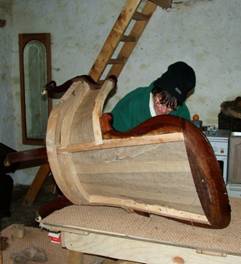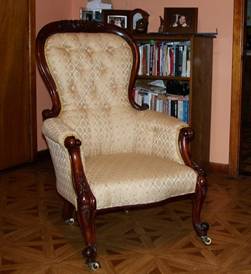Victorian upholstered armchair restoration
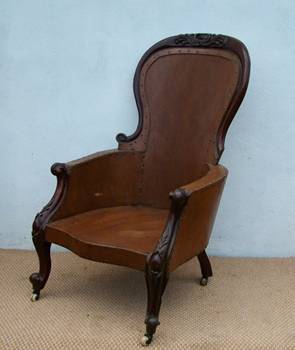
Victorian upholstered armchair restoration is a specialist sector in restoration and conservation. It involves both woodwork and upholstery skills. In order to be able to tackle these types of chair frame, a restorer needs to understand the construction techniques that were used in different ages across Europe.
You can find out more about conservation in Ireland from the Institute of Conservator Restorers in Ireland Nigel is a member of the ICRI because he promotes careful responsible approach to preserving the heritage we will pass on the future generations.
It is often said that the Victorians invented comfortable seating. More accurately, it developed in the 1820s and 30s when men ceased wearing wigs. As a consequence, a more reclining posture became possible.
Gentlemen sat in chairs with arms while the ladies, in restrictive clothing, sat on more open seats.
This example was re-upholstered in plywood in the 1960 or 70s.
It had developed a wobble and decisions had to be made about its future.
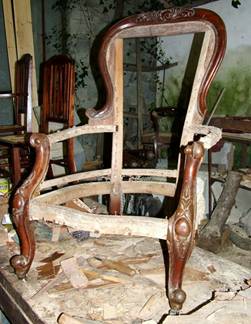
Removing the plywood revealed that some of the original frame had been replaced badly.
But worse, old plywood attracts woodworm which destroyed much of the remaining frame. Mahogany is practically immune to woodworm attack so the show-wood was unharmed except for the loss of one of the scrolls where the arm joins the back
A new frame was built in seasoned Ash to fit the mahogany show-wood
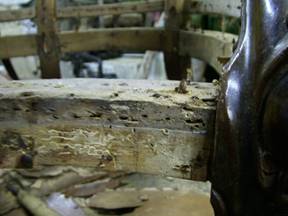
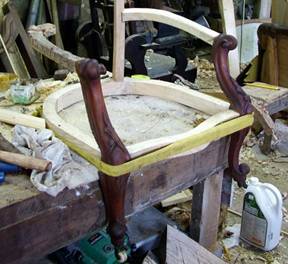
With a new stable frame, upholstery was a fairly straightforward process: The horsehair stuffing is supported by coil springs. Castors are always a bit of a problem because that tend to show signs of wear.. For 1850s to 1880s, the wheels should be white porcelain and the trolley should be brass. We regularly repair wear in brass trollies by inserting brass bushes.
Finally the finishing fabric is applied and the chair is returned to its former glory.
